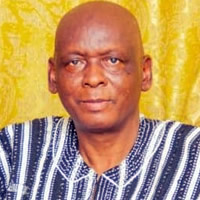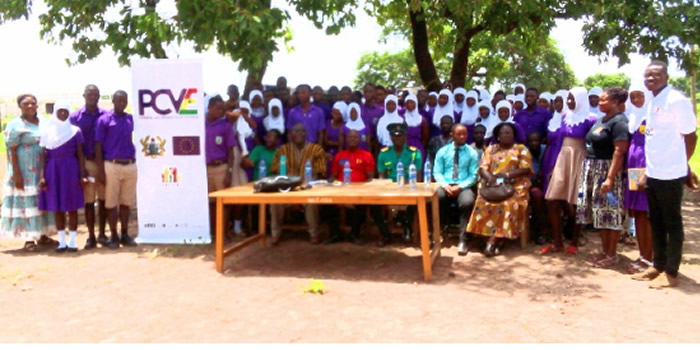
Introduction
Economic activity aims to provide a secure and regular income. Inactivity can result in social vices, especially among the youth. Many conflicts have been linked to the idleness of youth in communities where these conflicts have taken place. Depending on the resources and opportunities in a given area, people may be self-employed or engaged by others for a regular income or other forms of reward for the services they provide.
Economic Activity Status of Population 15 years and Older
Information was collected on the economic activity status of the population aged 15 years and older during the seven days preceding the census. These were classified as employed, unemployed or not economically active. Out of the population of 409,412 aged 15 years and older in the region, 67.3 percent were employed and 2.9 percent unemployed, while 29.8 percent were not economically active.
Employed Population 15 years and older
A little over 86.0 percent of employed persons 15 years and older across districts were resident in rural areas. In contrast, Wa Municipal hosted 65.3 percent of all employed persons residing in urban areas in the region. (Table 9.1)
The proportion of employed females was slightly higher than the proportion of employed males in all districts except Wa East (36.3% females and 38.0% males).
A large proportion (73.0%) of the economically not active population resided in rural areas. This was the case for all districts except Wa Municipal where 70.1 percent of the economically not active population were resident in urban areas.
The proportion of the female population (16.9%) that was economically not active in the region was higher than that of males (13.6%) and this was true for all districts except Wa Municipal where a slightly higher proportion of males (22.8%) than females (22.4%) were economically not active.
The Economically Active Population
The economically active population is made up of the employed and unemployed aged 15 years and older. Table 9.2 indicates that the economically active population constituted 69.5 percent of the population aged 15 years and older. About 85 percent of the economically active population in the region resided in rural areas.
In Wa East and Sissala West, for example, the economically active population constituted over three-fourths of the population 15 years and older (75.9% and 74.2% respectively). On the other hand, the economically active population in Wa Municipal constituted 54.8 percent of the population and about 66.4 percent resided in urban areas.
Occupation
Table 9.3 shows that the majority of the population 15 years and older in the region were skilled agricultural, forestry and fishery workers (72.8%). It also shows that about 10 percent were craft and related trade workers. The proportion of the male population working as agricultural, forestry and fishery workers (77.8%) was higher than that of females (68.3%). On the other hand, the proportion of females (14.7%) engaged in craft and related work was more than double that of males (5.6%).
The table further shows that in Wa Municipal, 25.7 percent of employed people are service and sales workers, and 8.5 percent are professionals. More than 70 percent of the employed population were skilled agricultural, forestry and fishery workers in all districts except Wa Municipal where the proportion was 29.3 percent.
In Wa East for example, 88.3 percent of the population were engaged as agricultural, forestry and fishery workers. The proportion of the female population engaged as service and sales workers was 10.3 percent compared with 4.4 percent of males in all districts of the region.
Employment Status of Employed Persons 15 Years and Older
Slightly over 50.0 percent of the employed population were self-employed without employees, with only 2 percent being self-employed with employees (Table 9.4). With the exception of Lawra, more than half of the employed population are self-employed without employees across all districts in the region. Among the male employed population, 59.0 percent are self-employed without employees while the proportion is 48.7 percent for females. Only about 2 percent of employed males and females were self-employed with employees.
A little more than one-third (33.9%) of the employed population were contributing family workers. The proportion of contributing family workers was high (more than 30%) across districts and municipalities except in Wa Municipal (12.4%). The proportion of females (41.5%) employed as contributing family workers was also significantly higher than that of males (25.5%).
Employed Population 15 Years and older by Industry
Table 9.5 shows industry of employed persons, 15 years and older by district. More than 70 percent of the employed population was engaged in the agriculture, forestry and fishery sector of the economy. About 9 percent was employed in the manufacturing sector while 6.1 percent was employed in the wholesale and retail and motor repairs sector.
The proportion of the population employed in agriculture, forestry and fishing sector was very high in Wa West, Wa East and Sissala East districts (84.0%, 87.0% and 83.1% respectively). A little over 15.0 percent of the population in Jirapa district, along with 12.5 percent in Wa Municipal and Nadowli districts were employed in the manufacturing sector.
Although the dominant activity in the Wa East and Sissala East was agriculture, forestry and fishing, the proportion of the population engaged in manufacturing in these districts was very low, indicating that there was little agro-processing activity.
In the region as a whole, 77.0 percent of the male and 68.0 percent of the female population were employed in the agriculture, forestry and fishing sector (Table 9.6), the proportion of females (14.0%) employed in manufacturing was far higher than the proportion of males (3.2%). The proportion of females (7.3%) in the wholesale and retail sector was also higher than males (4.7%).
Date Created : 11/28/2017 8:24:24 AM












 facebook
facebook
 twitter
twitter
 Youtube
Youtube
 +233 593 831 280
+233 593 831 280 0800 430 430
0800 430 430 GPS: GE-231-4383
GPS: GE-231-4383 info@ghanadistricts.com
info@ghanadistricts.com Box GP1044, Accra, Ghana
Box GP1044, Accra, Ghana